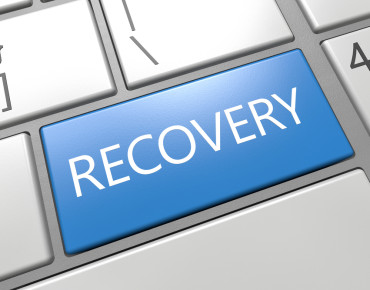4 Questions to Ask Before Choosing a BaaS and DraaS Solution

Enterprises risk losing almost $2 trillion due to downtime and data loss but the vast majority of organizations remain unprepared to mitigate this costly damage.
A recent study found enterprises suffered a collective $1.7 trillion loss due to downtime and data loss in 2014 alone. The research indicated that although there has been a decrease in the overall number of data loss incidents, the actual volume of data lost increased 400 percent between 2012 and 2014. To make matters worse, only half of organizations use some kind of endpoint backup solution despite the fact that the loss of mission-critical data costs organizations $71,000 an hour on average. Given these numbers, it’s clear that enterprises must do more to protect and back up their data. Yet only 6 percent of enterprises have a disaster recovery plan in place.
Organizations simply cannot afford the costs the loss of data entails. It is also important to note downtime can come in many forms: operational (45 percent), natural disasters (36 percent) and human error (19 percent). Fortunately, a variety of BaaS (Backup-as-a-Service) and DRaaS (Disaster Recovery-as-a-Service) offerings exist, but how can IT decision-makers evaluate each solution against their specific business needs? Here are four questions to consider when choosing a BaaS or DRaaS solution to ensure business continuity for your organization:
1. What is the most important factor in selecting a BaaS or DRaaS solution? There are a number of factors to consider, but first and foremost is speed. When data is lost or a website experiences downtime, the clock is ticking to get those resources back up and running as quickly as possible. Choose a provider that can deliver aggressive RTO (Recovery Time Objective) and RPO (Recovery Point Objective) within minutes. Additionally, opt for a cloud solution that enables you to test for every aspect of disaster recovery so that you are optimally prepared for every possible scenario.
2. What are the most important differentiators among providers? As an IT decision-maker, you often face daily and unexpected challenges and the occasional fires to put out. To that end, it’s critical to think about an automated solution that allows you to “set it and forget it.” Data should be backed up incrementally with little involvement on your part. With regard to DR, look for a solution that will automate the failover and failback process. While providers may boast this or that solution is the best, go with one that adheres to a strict Service Level Agreement (SLA), meaning they hold themselves accountable for delivering the highest level of quality and customer care.
3. What are potential pitfalls to look out for? A given solution may claim more efficiency or a faster recovery time, but it’s also important to investigate the type and quality of the provider’s storage. This is crucial for all scenarios, but especially important for BaaS solutions as some vendors use cheaper or less sophisticated storage because the chances of having to use it for anything other than an archive are very low. While the cost for quality storage may be more, it’s a bet you should be willing to take when it’s the last line of defense. It’s also important to note that the days of backing up to tape or storing onto disk are long gone. Today there are cost-effective solutions that store data on high quality SANs (storage area networks) that enable data to be delivered faster.
4. How should I decide between hosted private cloud and public cloud implementation? Both private and public clouds can provide fast recovery and business continuity. But where private cloud offers the greatest strategic advantage is in three very important aspects:
- Platform agnostic: Private cloud can offer a range of compatibility with a wide variety of vendors or technology for plug-and-play ease. There's no vendor lock-in.
- Scalability: Private cloud can keep pace and mirror the demands of a growing business.
- Resource and cost savings: Leveraging a private cloud solution that let’s you reuse infrastructure that is phasing out extends the life of equipment and eliminates the costs of purchasing the infrastructure and software needed for a secondary backup or DR site.
Data loss and downtime is never a question of if, but when. But the responsibility of choosing the right provider for BaaS and DraaS need not be a daunting one. Every organization is unique, so consider a solution that not only solves the business issues of today, but can address the emerging workloads and future demands of tomorrow.
Jordan Jacobs, vice president of products at SingleHop, brings more than a decade of business strategy and product development experience in the cloud, hosting, and managed services market to SingleHop. Jordan derives both technical and business aptitude from professional experiences spanning from cloud architecture and design, to data center engineering.
Related
Managing editor of Enterprise Technology. I've been covering tech and business for many years, for publications such as InformationWeek, Baseline Magazine, and Florida Today. A native Brit and longtime Yankees fan, I live with my husband, daughter, and two cats on the Space Coast in Florida.












